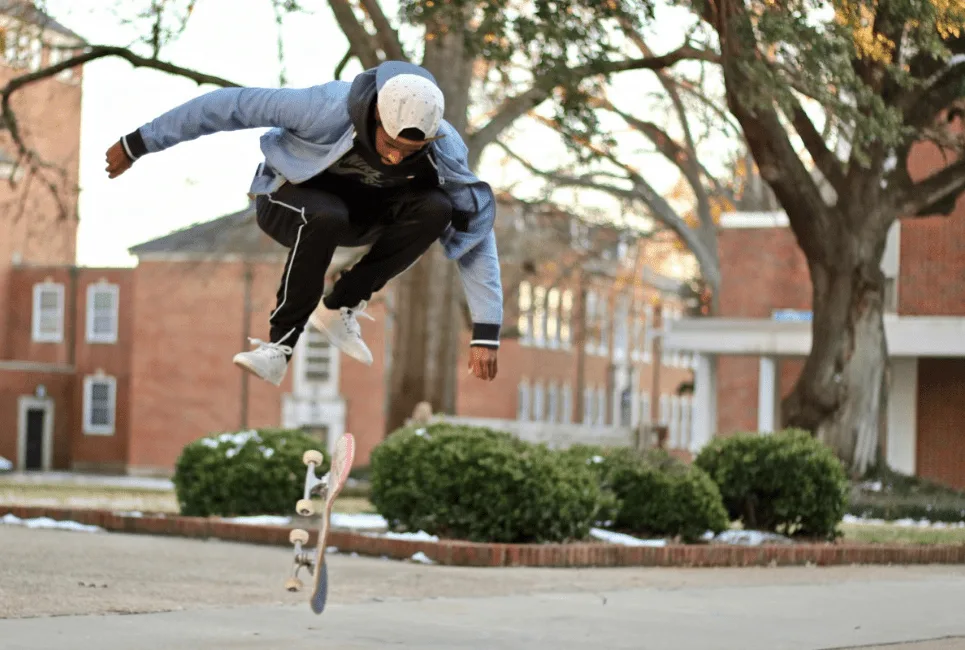- DGK Viper 8.125 Deck Review: An Overall Good Board - April 20, 2022
- Best Skateboard Bearings Guide: All You Need Consider - January 27, 2022
- Most Famous Old School Skateboarders - January 27, 2022
There are certain tricks within the medium of skateboarding that would fall into the category of dream tricks. For some folks, doing an ollie is a dream trick as they never assumed they would be able to do anything aboard. For other guys, it might be to get their first flip trick, whether that be a kickflip or a heelflip. For transition skaters, being able to drop in or do a simple stall might be your dream trick. Or, if you are gnarlier than the rest of us, you may have aspirations to learn a nightmare flip overcook down a 12-stair or something equally ridiculous. Well, for me, my dream trick was always a Tre-flip.
As a teen, I wasn’t all that great at skating, and the best I ever achieved was a very sketchy kickflip that bounced on the ground as it flipped. However, after over a decade away, I have picked up the habit again, and my ultimate goal was to land a Tre-Flip and make my younger self proud. I’m glad to say that after nine months back at it, I managed to nail one of these beautiful tricks and make up for my shortcomings in my younger years.
Here is my first ever Tre-Flip caught on tape for you all to enjoy. The relief here is palpable:
I assume that millions of skaters out there share this same obsession with this trick and would love nothing more than to land one of them. Well, that’s exactly why this article exists. In this guide, I intend to give you some backstory on the Tre-flip, walk you through the requirements you’ll need to meet before you go taking this challenge on, I’ll give you a thorough, step-by-step guide on how to land this trick. Plus, I will also go through some common pressure points that can be what’s stopping you from nailing your first Tre-Flip. I know firsthand how good it feels, and I want to pass that on to you. So without further delay, here is our comprehensive guide on how to Tre-Flip.
What Is a Tre-Flip?
A tre-flip is a trick that requires just the right amount of flick and scoop to pull off. This is the combination of a 360 shove-it and a kickflip. The skater will begin the movement by scooping the board around with their back foot before kicking out with their front foot. If done correctly, this will create a spin and flip along both axis that syncs up perfectly, setting the board in motion and beginning one of the most visually stunning tricks in a skater’s arsenal. This trick requires the skaters to think about multiple components at once, such as balance, scoop, flick, posture, and air time, and we would say, is often the first trick that a skater learns, which is considered an expert trick.
Who Invented the Tre-Flip?
It has become very fashionable, or at least the easy answer, for those involved in skating to suggest that Rodney Mullen created just about every flip trick out there today. This is because, for the most part, he did create them, but not every single one. While we are sure that Rodney would love to take credit for creating this skater’s favorite, we have to inform you that this trick comes from a rather unlikely source. This trick was created, perfected, and popularized by none other than Jason Lee.
That’s right, the star most well known for his acting career, starring most notably in My Name is Earl was quite the skater in his day. During his heyday when he rode for Stereo, Jason was one of the best-known skaters of the era and had a unique style and technical ability that few could match. Which eventually led him to create and master the art of the Tre-flip. Many still credit Rodney with the invention of this trick, but even the grandfather of skating himself credits Jason with this trick. To this day, skaters still marvel over the steeze with which Jason Lee would perform Tre-Flips, and it’s easy to see why. So take the time to go back through the archives and see just how gnarly this guy was back in the day.
Are There Variations of The Tre-Flip?
Every trick out there was close variations and sister tricks that skaters could add to their trick list. Some of these add extra flips, spins, and rotations to make the trick much more complex and stylish. While others reverse the movement to offer something which looks the same but is very different indeed. Here is a quick rundown of all the variations of a Tre-Flip:
Nollie/Fakie/Switch Tre
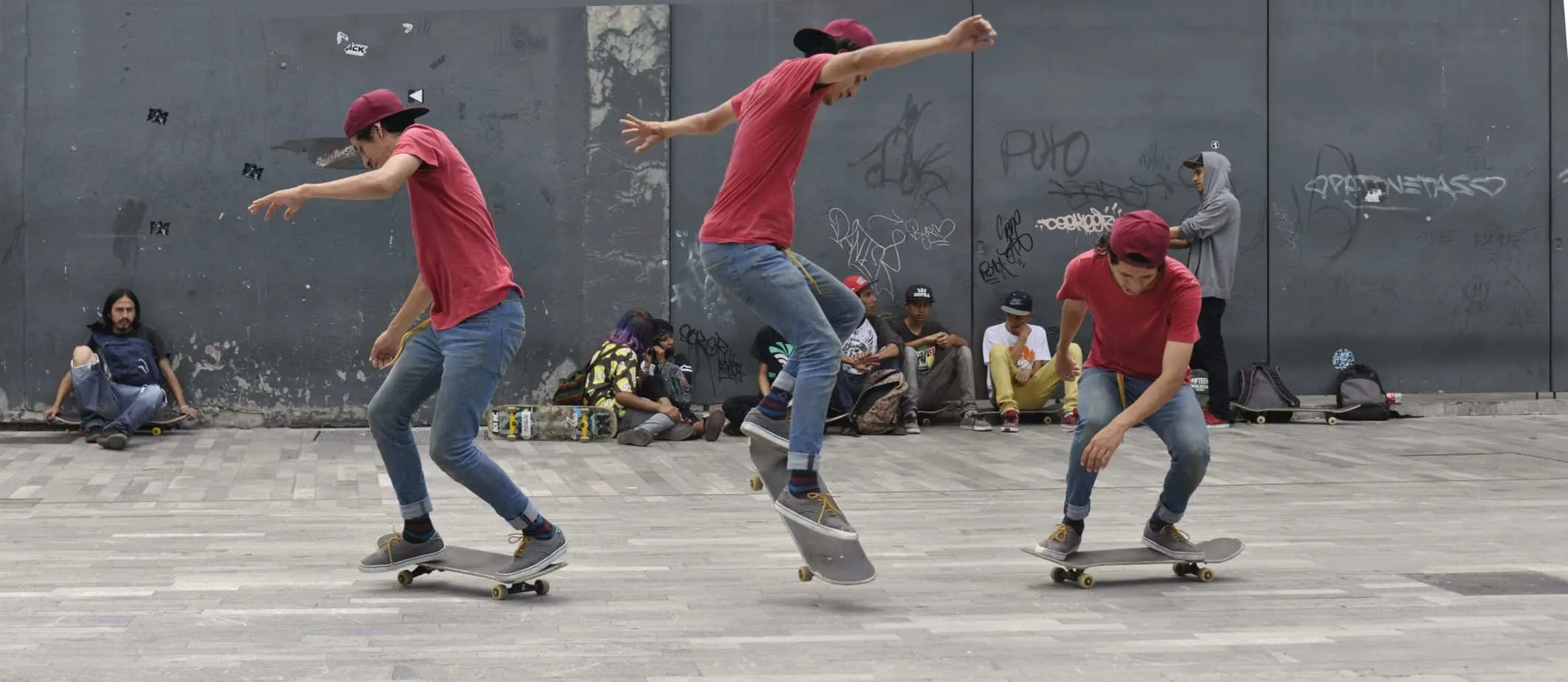
First, we have the stance in which you perform your tre-flip. If you ride fakie or switch and perform a tre-flip, this will alter the look and feel of the trick significantly, and if you pop nollie, this will also make the trick much more difficult to perform.
Lazer Flip
The Lazer flip is the heelflip equivalent of the Tre-Flip. To perform this trick, the skater will need to perform a 360 FS shove-it rotation while flicking a heelflip. This is a much more awkward trick to perform when compared to the tre-flip due to the FS shove and the fact that the skater is unsighted for most of the trick. So if you can pull this one off, then kudos to you.
Tre Double Flip
If you have tre-flip mastery, you might want to add an extra bit of flick to your trick. This is when you flick the board around twice while maintaining the 360 shove-it motion.
Big Spin Flips
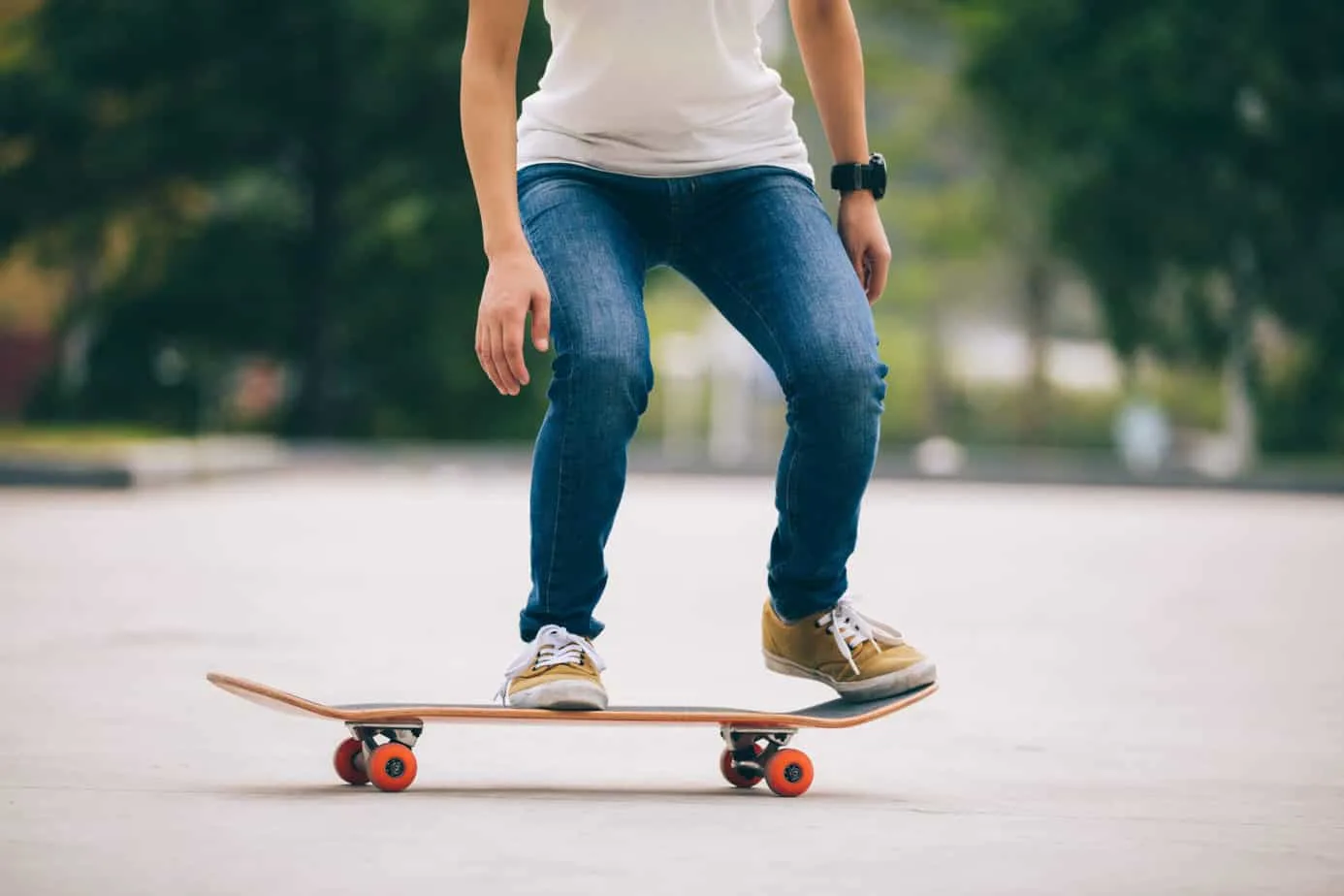
Big spin flips are very similar to tre-flips. The only real difference between the two is that when the player begins the motion, they will also rotate their body 180 degrees while in the air. This allows the skater to do a body varial while the 360 flip motion is occurring below them and landing. This is referred to as a big spin flip.
360 Hardflip
The 360 hardflip is easily the hardest of the tricks listed here. This trick is similar in terms of structure to the tre-flip. The skater will still flick a kickflip motion. However, instead of a BS 360 shove, they will scoop frontside. This means that everything is moving in the same direction and happening directly in between the skater’s legs, forcing a scissor leg motion. A hardflip is tricky enough, but to create enough scoop and hang in the air long enough to complete a 360 hardflip is another level. So, in short, this will take some practice.
360 Inward Heelflip
Then lastly, we have the 360 inward heels. We would argue that this trick is slightly easier than the one listed above, but not much. To do this one, this skater will need to flick a heelflip while also rotating a 360 BS Shove-it. Depending on your preference for FS/BS shoves, some skaters find regular inward heels somewhat easier than varial heels. However, a 360 inward heel is a huge ask.
What Tricks Should I Know Before I Learn to Tre-Flip?
A tre-flip is not a beginner trick. We would argue that it’s not even an intermediate trick. If you can perform a tre-flip, we say that you are an excellent skater in your own right. So to make this happen, you need to have a lot of other tricks and skills under your belt to give yourself the best chance of success.
In terms of essential tricks, we would say that the skater will need to know how to ollie. You will also need to have your FS Pop-Shove-its locked down, and 360 shoves couldn’t hurt. Then the skater will also need to have their kickflips locked down, and again, varial kickflips would also really help in this learning process.
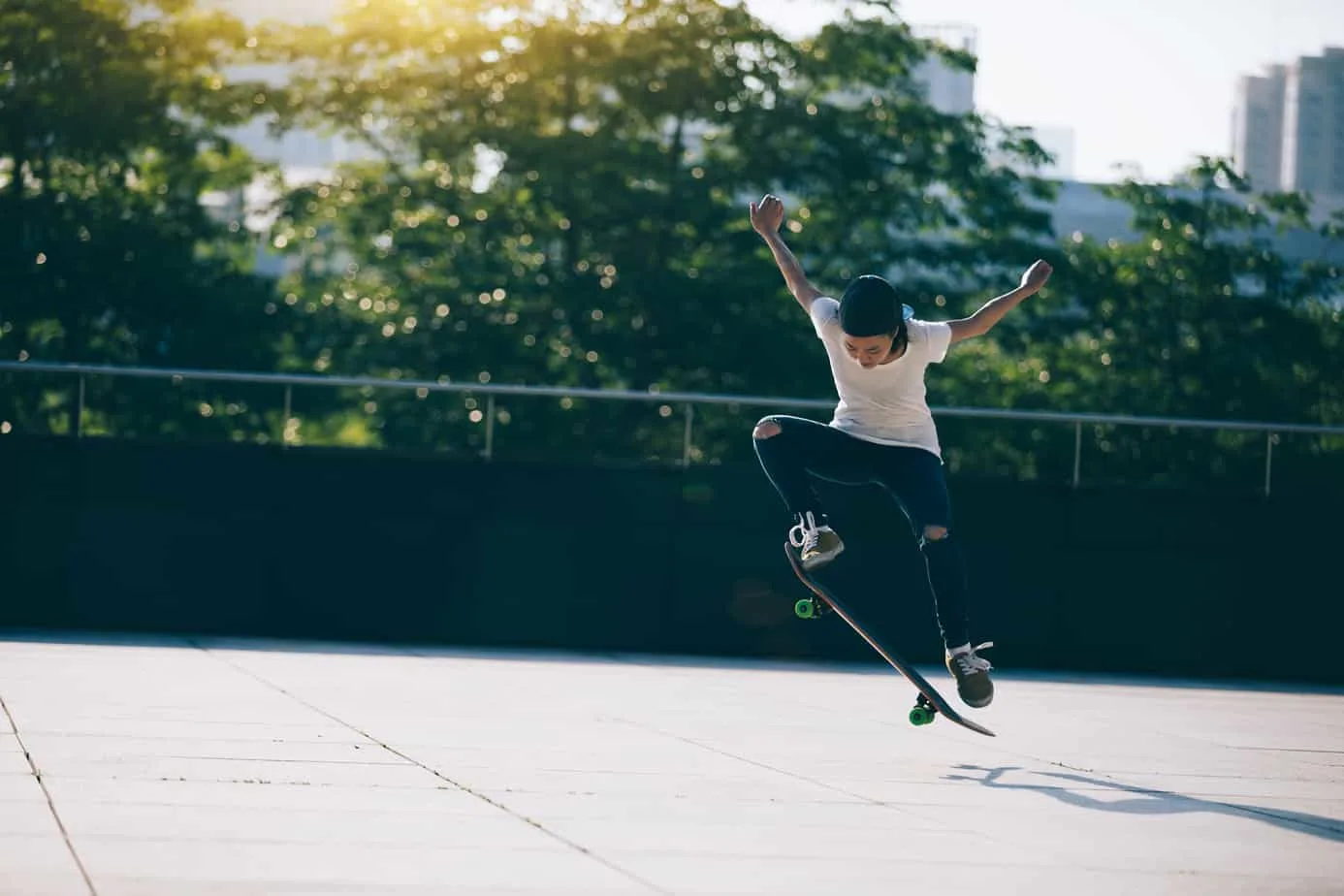
Here is a full list of the tricks we would suggest the skater learns before they try to Tre-Flip:
Essential Tricks
Helpful Tricks to Know
- BS Pop Shove-it
- Varial Kickflip
- FS 360 Shove-its
- Fakie Big Spins
- Heelflips
- Backside/frontside Flips
- Half Cab Flips
How to Tre-Flip: A Guide
Okay, so you have worked hard to learn the basics flip tricks, and core skills needed to get to the start of the learning process. Now, it’s time to break down this mammoth of a trick. Before we get into this one, we just want to give a little disclaimer. Tre-Flips are hard. They will not come easy, and this is not a trick that you will likely get in one session, but that’s ok. This trick can feel alien, can lead to days filled with frustration, and can lead to you walking away with bloody shins. But persevere, work hard, and this one will be yours. So without further delay, here is our Tre-Flip guide:
Step One
The first thing that you should try and do is take your board, stand with one foot off and one foot on the tail. Then you should practice scooping the board around in a 360-degree motion and catching it with the same foot. The main point of focus should be that you not only scoop backward but also flick your ankle diagonally in the direction the board is traveling to offer extra torque.
Step Two
Once you have the above step locked down, you should begin rolling on the board and scooping the board, flicking your foot in the kickflip motion in tandem with this, and then stepping off the board. This will allow the board to go through the desired motion, and then the skater should try to catch this again with one foot. This practice is to help the skater understand how much flick is required to flip the board and also helps them practice keeping the board close to them when performing this trick, as there is a tendency to simply kick the board well ahead of yourself initially.
Step Three
Once you have mastered the motion that the board should create in the air and you are keeping the board relatively close to you when flicking this trick, it is then time to try and put all the pieces together. The first thing we need to establish is the correct foot position. For this trick, you will have to adapt a pretty unnatural foot position that can take some getting used to, but after a while, it will become second nature. Your back foot should hang off the outside tail pocket of the board, and you should try to hook your toes under the board, allowing you to create more force to scoop the tail around. Then as for the front foot, this should be in a position similar to the kickflip position, with your foot hanging slightly off the edge of the inside of the board. However, for a tre-flip, you will want to angle your foot so that your toes directly face the tail, and you should have your foot further back so that it is halfway between the two truck bolts in the middle of the board. Spend a little time getting used to this stance.
Step Four
Now you should think about weight distribution. There can be an inclination for skaters to lean forward for this trick; however, doing this will lead to the board flipping behind you and making the trick near impossible to land. So when you set up to flick this trick, try to sit backseat and allow the board to come forward. If it goes out in front, it’s always an option to bone the trick and wrestle it back under you. Something you can’t do when the trick is behind you.
Step Five
Now that you are set up, it’s time to flip the trick. To begin, you will want to hook your toes under the outside tail pocket and begin to scoop the board. Remember to apply a downward motion so that the trick pops as well. A good indicator of a good scoop is that the board will already be 90 degrees around by the time you pop and flick the trick. We would also urge the skater not to open up their shoulders throughout this trick; it will only upset the stability of the flip. Try to keep your shoulders square throughout and let your back foot do all the work.
Step Six
The scoop is now in full motion, and now you’ll need to add the flick to flip the board. Unlike a varial or standard kickflip, the skater won’t have to flick this trick too hard. The best way to describe this motion is like a karate kick, allowing your foot to get up off the board, apply just enough force to flip the board, and then ultimately stay out of the way until it’s time to catch the board again. This trick is about 80% scoop with the backfoot and 20% flick with the front foot. Feel free to experiment with this as everyone’s style is different, but the key thing to take away here is that too much flick will upset the motion of this trick.
Step Seven
Now it’s time to finish this trick off. If you have done everything right, the board will be rotating and flipping in equal measure below you. So all you have to do is keep out of the way and watch the board as it travels around. To keep out of the way, you should follow through with the motion that each leg went in to start the trick. Your back foot should have flicked backward and diagonally, whereas your front foot should now be directly out in front like a karate kick. We would suggest you try to emphasize this in the beginning as this will give you more air-time and, therefore, more time to react. Once the board has made its full rotation, use your front foot to reach back down and catch the board and stabilize the deck. Then bring your back foot back on-board, brace for landing and then bend the knees to take the shock out of the landing. If all goes to plan, you should have just landed your first Tre-Flip. Congrats!
Most Common Mistakes When Learning to Tre-Flip
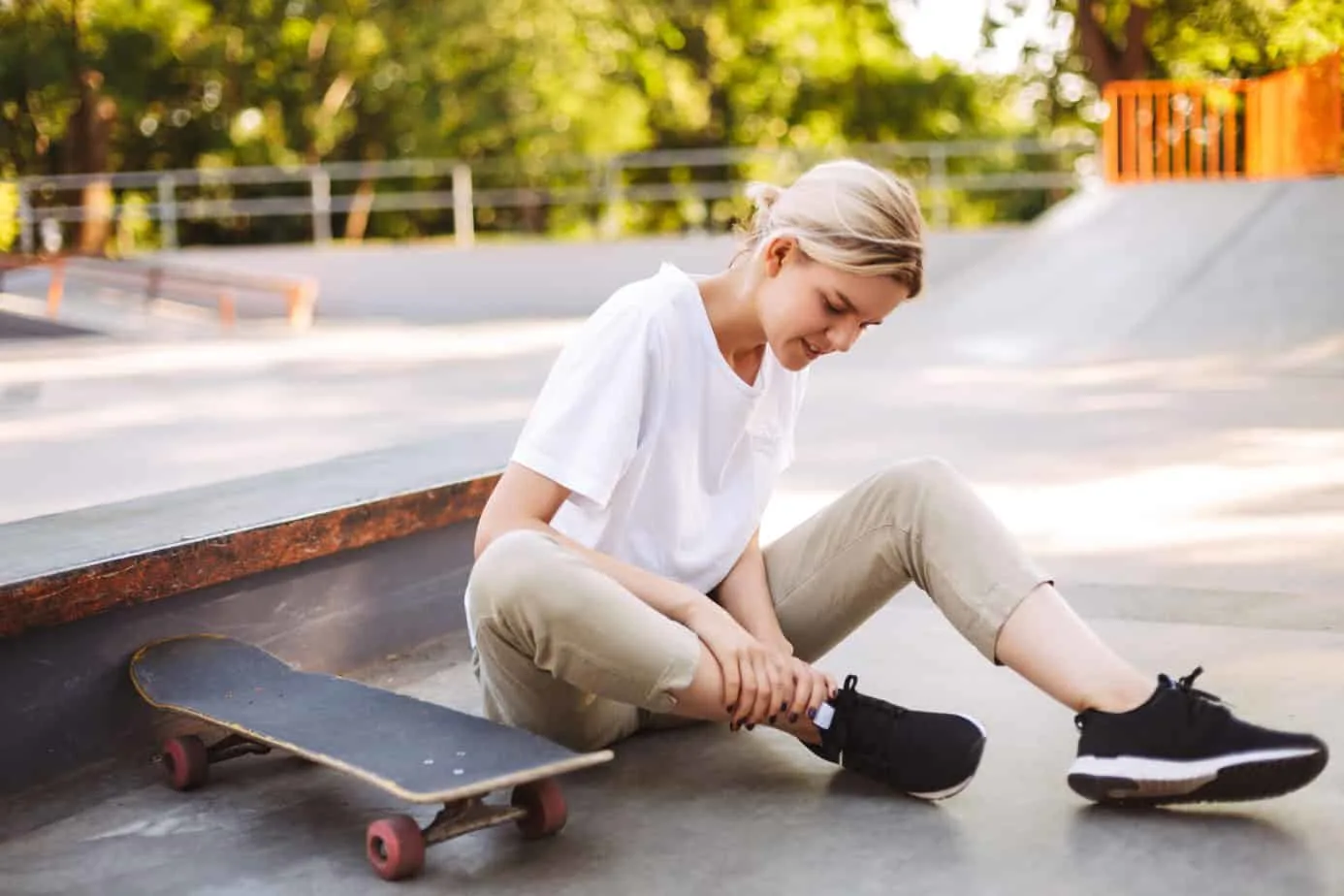
While we would love every single person to fly through the steps above and land Tre-flips consistently with little to no stress, that simply isn’t realistic. This trick is a monumental one and will take some time to perfect. There are so many moving parts to this trick, and without a complete understanding of all this trick requires, you will struggle to get this one. There are so many potential pitfalls with the Tre-Flip, but some common mistakes and habits occur more than most. So we have taken the time to document these in the hope that you will read, a lightbulb will appear overhead, and you’ll be able to outcome the mental block that this trick has caused. Here is a quick rundown of all the potential issues one can have when learning to Tre-Flip:
Board Going Behind You
One of the most common issues, and one that I still have some issues with, is the board going behind you when flipping this trick. This happens when the skater doesn’t have the right weight distribution and posture when attempting a tre-flip. If you are leaning forward on the board or you are dipping your shoulders, then the chances are that the board will flip behind you, and you’ll have no chance of catching it. So when attempting this trick, try to relax your starting stance, keep those shoulders loose without opening them up and try to sit backseat on this trick at least at the beginning.
Not Enough Scoop
Not scooping the board enough when trying this trick is criminal and will lead to the skater often inadvertently kicking varial flips, which isn’t what we are going for here. To make sure you get enough scoop, go back to step one of our guides and make sure that you understand the position and motion needed to take the board all the way around. For many, it is as simple as adding that little bit of extra flick with the ankle right at the end of the scoop, while for others, hooking your toes around the outside pocket can be a real game-changer. Experiment with this and find a method that helps you scoop the board all the way around.
Not Enough Flick
We mentioned that this trick is 80% scoop and 20% flick, but that’s not to say that the flick isn’t important. In certain circles, you might hear that some skaters suggest you don’t even flick a tre-flip at all. Well. This is a little hyperbolic as, if you don’t flick a little, it won’t flip at all. So what we would suggest is that instead of going the other way and over flipping the board, causing varial flip motions, that you emphasize the karate kick. This is when you lift and kick your foot out away from the board. This doesn’t act as a strong flick motion, but it’s more than enough to the board around. Try to let the board scoop 90 degrees and then push your leg out with force off the board, and eventually, you will see the results.
Leaning Back
Then lastly, it’s common to see guys nail tre-flip rotations but struggle with the landing. Some skaters have a habit of leaning back on these tricks, mostly because you are catching the trick in front of you and pulling it back in below you. However, some don’t pull it back in, the land down, and the board scoots out from below them.
To fix this one, try your best to lean into the catch while in the air. It is also helpful to jump slightly ahead to meet the flight of the board, and this means that there is less of a need to wrestle the board back in below your feet.
Tres For Days!
As you can see from the information above, the Tre-Flip is a tricky one to lock down, but one that is so satisfying to do when you have a knack for it. This trick requires balance, precision, and timing, but if you can master it, you’ll have one of the most globally adored skate tricks in your arsenal. I may be biased, but I challenge anyone to show me a more aesthetically pleasing trick than a Tre-Flip. We hope that this guide serves you well and that you too get to have that moment of glory like I did, and as always, thank you for reading!
FAQ Section
Answer: A 360 flip is just another name for a Tre-flip. They can also commonly be referred to as 3-Flips and 360 kickflips. This trick is a combination of a 360-shove-it and a kickflip motion done in tandem. This is widely regarded as one of the most aesthetically pleasing tricks in all of skateboarding.
Answer: The simple answer is yes. After you learn all of the fundamental skills of skating and the foundation tricks that open up paths to multiple others like shove-its, kickflips, and heelflips, this is often the first technically challenging trick that skaters will learn. This trick asks for precision, timing, balance, and a heck of a lot of perseverance. However, the feeling you get when you make your first Tre-Flip makes it all worth it!
Answer: While it isn’t strictly essential, We would suggest that you do. If you know how to varial, you will understand how to flip a board while applying a 180-degree spin, which will lend itself to learning a tre-flip.
Looking for more interesting readings? Check out:

